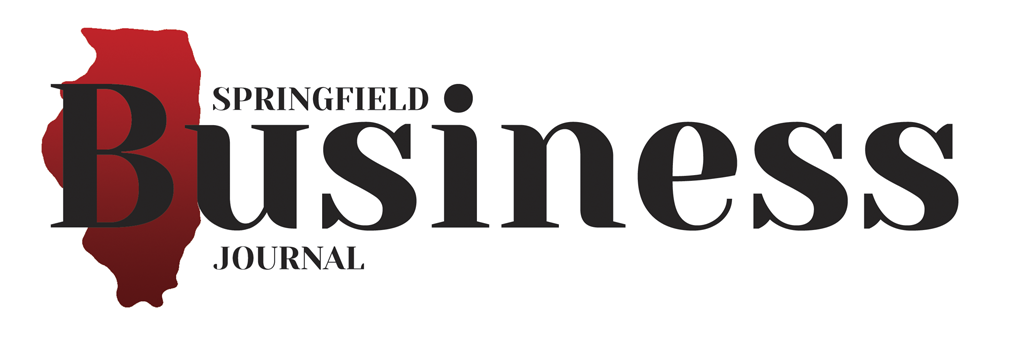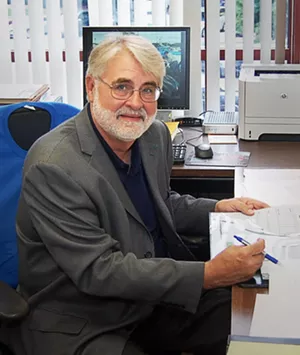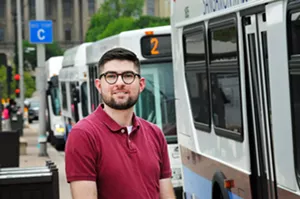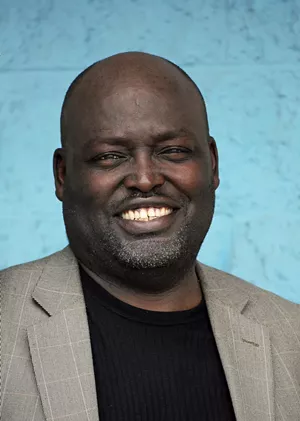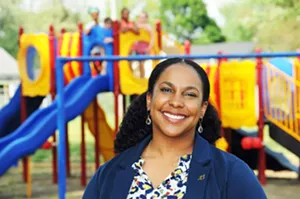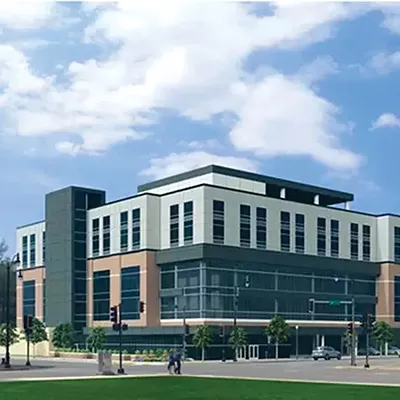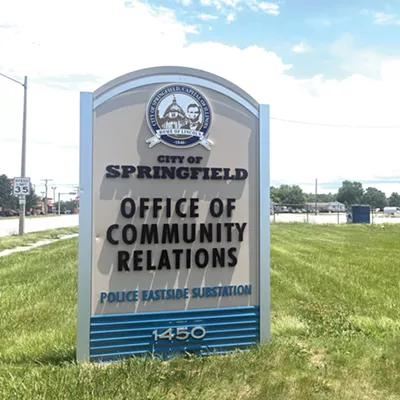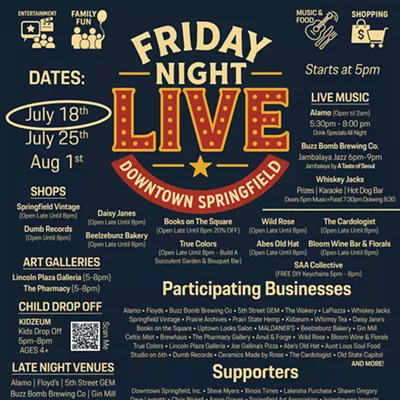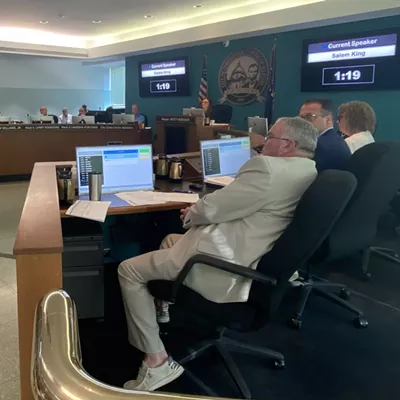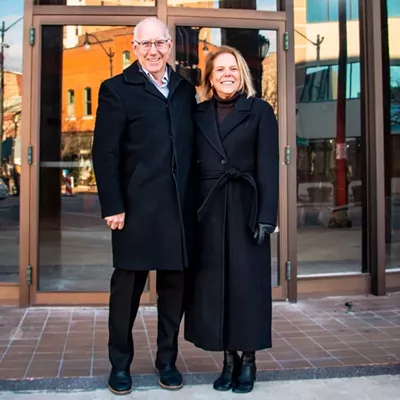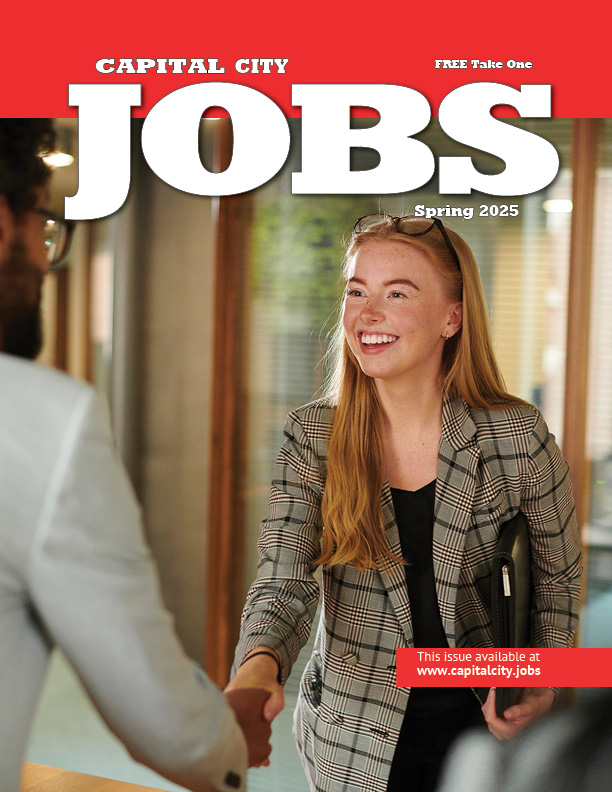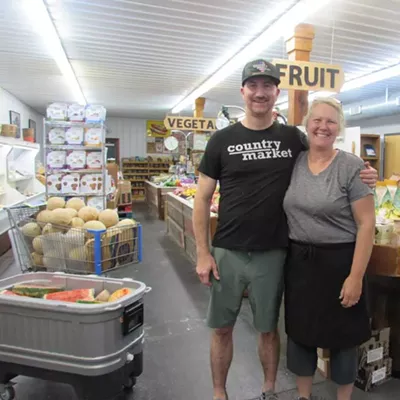Springfield leaders and thinkers say where we’re going, and where we ought to go
Article and photos By David Blanchette
The state’s bicentennial observance gives Illinois residents the chance to reflect on how far we’ve come in the past 200 years, but it also asks what the state will be like in 2218. Things will certainly change, but how will they be different? What would a current resident find familiar 200 years from now, and what would be completely foreign?
Springfield has its share of people who think seriously about the future, and what they envision and hope for in the coming decades paints a picture of opportunities, challenges and, above all, change. Since this is a business publication, we’ll start with the economic forecast.
Experiencing the economy
“Baby Boomers show status by buying things. That’s not what younger people are doing,” said Norm Sims, the former executive director of the Springfield-Sangamon County Regional Planning Commission. “They show status by the experiences they have. The change in the marketplace is coming, and will continue to come, from the demographics of the consumers themselves.”
“Merchants are going to have to look at the shopping experience, how you can provide more things than just a place to shop,” Sims said. “Around the country we are not seeing new construction of enclosed malls or larger strip centers, we are seeing more lifestyle centers like what’s being developed around Scheels, where there are things not only to shop for, but to see and do in the same place.”
Sims said that the resurgence of bookstores and independent vinyl record stores is an example of this trend in action. Both types of businesses have become adept at having events, meetings, lectures, film showings and other activities in addition to things they sell.
As prevalent as internet retail sales have become, you still can’t receive a personal experience while shopping via computer.
“Big box stores are starting to adapt because they are the ones that are most being beaten by internet sales,” Sims said. “A good example is Hy-Vee in Springfield. They provide a wide assortment of things along with groceries. You can do wine tasting there, learn how to cook certain meals, learn more about cuts of meat and so forth.”
The experience economy will also impact one of Springfield’s key industries, tourism.
“Consumers aren’t going to take the static ‘come and visit Lincoln sites’ any more,” Sims said. “We are going to have to show a larger product than Lincoln. We must expand into other areas to show that there are experiences you can have here.”
Sims said the younger, experience-seeking shopper of the future will continue to desire things that share value, such as local and handmade items. Meanwhile, the aging generations of Baby Boomers and beyond may not buy as much “stuff,” but they will be in the market for services.
“Look at the growth on the local level of businesses that mow lawns versus what was here 20 years ago,” Sims said. “When I was young you’d hire some kid in the neighborhood to mow the lawn. Now we have seen a service industry develop of people who mow lawns. Services are becoming a larger part of that whole retail mix.”
A service-driven economy, where many of the “goods” offered are not taxed, means revenues to fund government will drop, Sims said. That reduction, combined with outsourcing of government work, means we can look for a decline in government jobs. On the upside, an aging population means more jobs in the future for the health care industry, he said.
More jobs is what the new Land of Lincoln Economic Development Commission is all about, and those involved hope to chart the community’s economic course for the future. But first, the community needs to decide what it wants to be.
“The issue is trying to figure out what we want to be when we grow up,” said Sangamon County Administrator Brian McFadden, an organizer of the Economic Development Commission. “We’ve kind of had fits and starts with that over time, but we really need to do that as a community. When we decide ‘this is really what we want to be,’ then we will need the commission to implement that.”
The commission is officially formed; they have established bylaws and officers and had their first organizational meeting in late April. Next up is finding a CEO who can start the visioning exercise which will drive everything else, McFadden said.
“The vision is important, obviously, but so is the process,” McFadden said. “That’s where we’ve fallen down in the past, because we haven’t had a process to put in place what we want to do.”
Putting the “community” into community
We are living longer, but it’s where and how we are going to live those longer years in the future that will see change, according to Mike Waldinger, the executive vice president of the American Institute of Architects (AIA) Illinois.
“As the Baby Boomer generation ages and has longer life expectancy, we will design for how they want to live in their homes, but also how they want to live in their community,” Waldinger said. “These people have a lot of time on their hands that they didn’t have before because they were working, so you have to think of the community amenities as much as you do the roof over their heads.
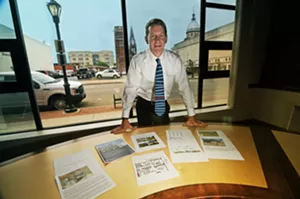
“The home of the future will be more adapted to aging in place and will be designed so people who have limited mobility can use it, but it isn’t obvious that it’s built for someone in a wheelchair,” Waldinger said. “Their outdoor space doesn’t necessarily need to be their own space – you might have several individual homes that share a courtyard. There’s a lot of talk about shared communal spaces.”
The idea of a shared economy is already catching on, Waldinger said, as evidenced by the rise in companies where entrepreneurs can rent a desk or office from which to conduct their own businesses. The same idea could apply to future living, where residents would have their own private spaces but perhaps share a kitchen, outdoor dining or indoor media room spaces.
Sustainability and green design will be an expectation in all new construction, Waldinger said, but to that will be added a new design goal – resilience.
“Structures will adapt to whatever the climate is going to throw at them,” Waldinger said. “Climate zones are in flux and in any given season you could have a 50-degree temperature difference in any 24-hour period. Buildings need to adapt to these broader swings in climate.”
More young people will enter the workforce and be able to work remotely, they will carry huge amounts of college debt, and they will want to be close to where the action is, Waldinger said. Because of these factors, people will not want to locate in expensive cities but will instead look for affordable, small to middle-sized cities with cultural amenities such as diverse dining and entertainment options – places like Austin, Nashville, Columbus, Minneapolis and, if we play our cards right, Springfield.
“You have people coming into the workforce with a different idea of what the American Dream is,” Waldinger said. “It’s not the white picket fence and two-car garage. They want to be closer to where the action is so we are seeing a lot of growth in people returning to urban cores.”
Groundwork for the future is laid
Twenty-nine-year-old Springfield resident Steven Simpson-Black is an example of what that future growth may look like. He’s a small-business owner and what he looked for, and found, in Springfield shows what might attract more young residents like himself.
“We have laid a lot of the groundwork for a really good, walkable community. A lot of people don’t notice it because it is not useable to them right now. But as the economy changes I think those things will be more useful,” Simpson-Black said. “We are actually ahead of the game on a lot of things, but because they don’t fit within the current framework of the economy, no one really sees them as beneficial. But 20 or more years from now people will look at that investment and say ‘Wow, we’re glad we did that.’”
Simpson-Black likes the planned high-speed rail line. He thinks Springfield will soon adopt bicycle sharing like some other cities have done and sees a future with more autonomous vehicles that could be shared. He considers the city’s public transportation system a plus and thinks it will receive even more use in the future. All of these transportation modes bring people closer together, which Simpson-Black thinks will be another feature of future life.
“Right now we are in a kind of situation where if you want to hide and pretend to be on your own you can kind of do that, but I don’t think it will be like that in a few decades,” Simpson-Black said.
“I think the definition of ‘job’ will change,” Simpson-Black said. “As the ‘gig economy’ takes over, people will be able to live more where they want, not based on what jobs are available, and they will make more judgments on where to live based on quality of life factors like liveability, walkability and community.”
The current volatile political and social climate is also a sign that more change is coming in the future. In this case, change will be good.
“There has been a lot of political and social underbrush that had never been burned,” Simpson-Black said. “There are a lot of disagreements that have been ignored for a long time. What we are seeing right now is a lot of that stuff finally coming to the surface. And it has to.”
Bridging the gap
An increase in the Springfield Hispanic population and more cohesiveness within the black community in the future could help bridge the opportunity and income gap that has traditionally existed between the city’s white and minority populations.
“It’s important for the black community to have a cohesive economic base,” said Springfield entrepreneur Mike Pittman. “It will take a lot of small businesses to perform the economic development we need to turn around the east side of Springfield.”
Pittman pointed to the gentrification of traditionally minority areas in larger cities and noted that these areas are attractive because each has a significant drawing point. “Now people are starting to see the importance of being there,” which could help create “cool neighborhoods” in the downtown Springfield area, Pittman said.
“You get a lot of the younger black kids now who are going off to colleges and not wanting to come back to Springfield. So we need to start opportunities for them to come back and to do some things to bridge the economic gap that exists here for blacks,” Pittman said. “Within the coming decade there’s going to have to be some sort of cohesiveness as it relates to the black community, for building any wealth or power structure, because right now we are fragmented as it relates to political, socioeconomic and religious lines.”
One division which will be welcomed is the high-speed rail line that runs through Springfield’s east side, something Pittman feels is a boost to the entire community but particularly for that part of town.
“You will have more people who might actually work in the Chicago area but live where it’s cheaper in Springfield and take the train back and forth to work,” Pittman said.”You are going to see the inner core of the city transformed.”
Pittman feels high-speed rail will help lure job-producing industries, and Springfield Black Chamber of Commerce CEO and President Dominic Watson agrees. Watson is also optimistic about the jobs that the Land of Lincoln Economic Development Commission could help create.
“I think we are on the cusp of something great as long as our current leadership stays focused and is willing to work with everyone,” Watson said. “If we can get corporations that are employing individuals from all walks of life and different income levels coming into Springfield, I think we can continue on this path toward success.”
“Springfield can move to be a vibrant community. We have seen very high success rates, particularly for historic state capital cities throughout the nation,” Watson said. “I think if we focus on driving economic development in Springfield with job creation, the community will flourish.”
But the city won’t flourish if there remains an economic divide depending on the side of town in which you live, Watson said. Any comprehensive approach to economic development should not limit anyone based on income, race or gender, he added.
“Those who come after us are going to be at the forefront of not looking at race, but embracing race,” Watson said.
A more well-rounded approach to health care
Eighty percent of a person’s health is affected by what happens outside of the hospital or clinic, and the health care system of the future will focus on that.
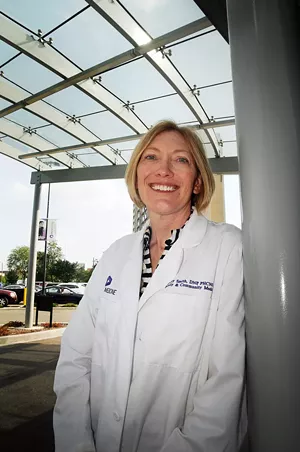
“Someone’s health is affected by their community, environment, family, trauma, food and income,” said Dr. Tracey Smith, director of Population Health, Community Health and Community Outreach, and Family Community Medicine for the SIU School of Medicine. “Health care is having to move outside the clinic and the hospital and I think you’re going to continue to see that grow, because that’s really the only place we’re starting to see success with improvements in health.”
“When we talk about violence, the crime that is going on in neighborhoods, it’s because we’ve lost a sense of community. And when you lose a sense of community you become isolated and your health decreases,” Smith said. “So programs that we put in place will also have to be measured by a return of community. Because when you see a community get healthy, that also means that people individually in that community are healthy.”
But measuring a return on community, rather than a return on investment, will mean finding new ways of communicating between those in health care administration and those providing the services.
“Countries that do this really well spend at least two dollars on social services for every dollar that is spent on medical care, because we know the two dollars spent on social services goes so much farther to improve health,” Smith said. “The problem is that the language has not always been spoken correctly in the way that insurance companies or those who speak business gather it up.”
Smith said health care professionals will get more creative with marketing in the future, not just to sell their services but to convince patients to do the right thing.
“You are selling patients on what is the best thing to do. We have to learn what clicks with different generations and we have to market our messages correctly,” Smith said. “It’s not the same old ‘you know that you need to exercise 30 minutes a day.’ That doesn’t work anymore.”
Better medication management also needs to come in the future, and it begins with making better use of pharmacists.
“We know that when we have a pharmacist working alongside the physician it makes a huge difference in the number of medications that are prescribed and we are choosing the best meds for those patients,” Smith said. “We also have to teach people at a young age that some pain is natural. You’re going to have pain in life. We don’t always have to have a pill for that.”
Children as partners
Your partner in the future may be younger than you expect.
“We need to look at and invest in our children as our partners,” said Mia Woods, executive director of Big Brothers Big Sisters of the Illinois Capital Region. “We need to make sure that they have better educational settings, similar opportunities and access, and recognize that their future is our future too.”
“It’s realistic but it’s huge, daunting, tiring and never-ending,” Woods said. “That means it’s everybody’s problem, everybody’s work, but it’s also everybody’s blessing. When children are failing at school we are all failing.”
Job number one is reinforcing each child’s value.
“We tap into the inherent awesomeness that all kids possess through mentorship, pulling that out of them and letting them see what they are worth and what they are capable of and what they can accomplish,” Woods said. “They will be our future leaders one day, making our laws, raising children, and being our workforce. We must make sure they understand that and find value in it so they will work hard at being the best they can be at those things.”
Children learn by example, and Woods said if they see adults investing in their future they will respond in kind.
“When kids see us being involved they understand that community feel and sense, and they want to do that too,” Woods said. “We want to make sure we have future engineers and police officers, but also that we have future people who are invested in their community.”
